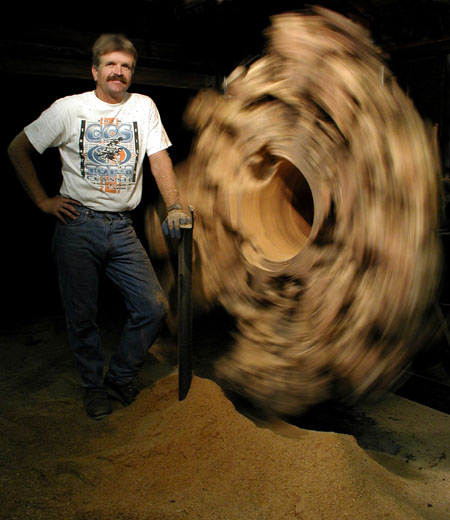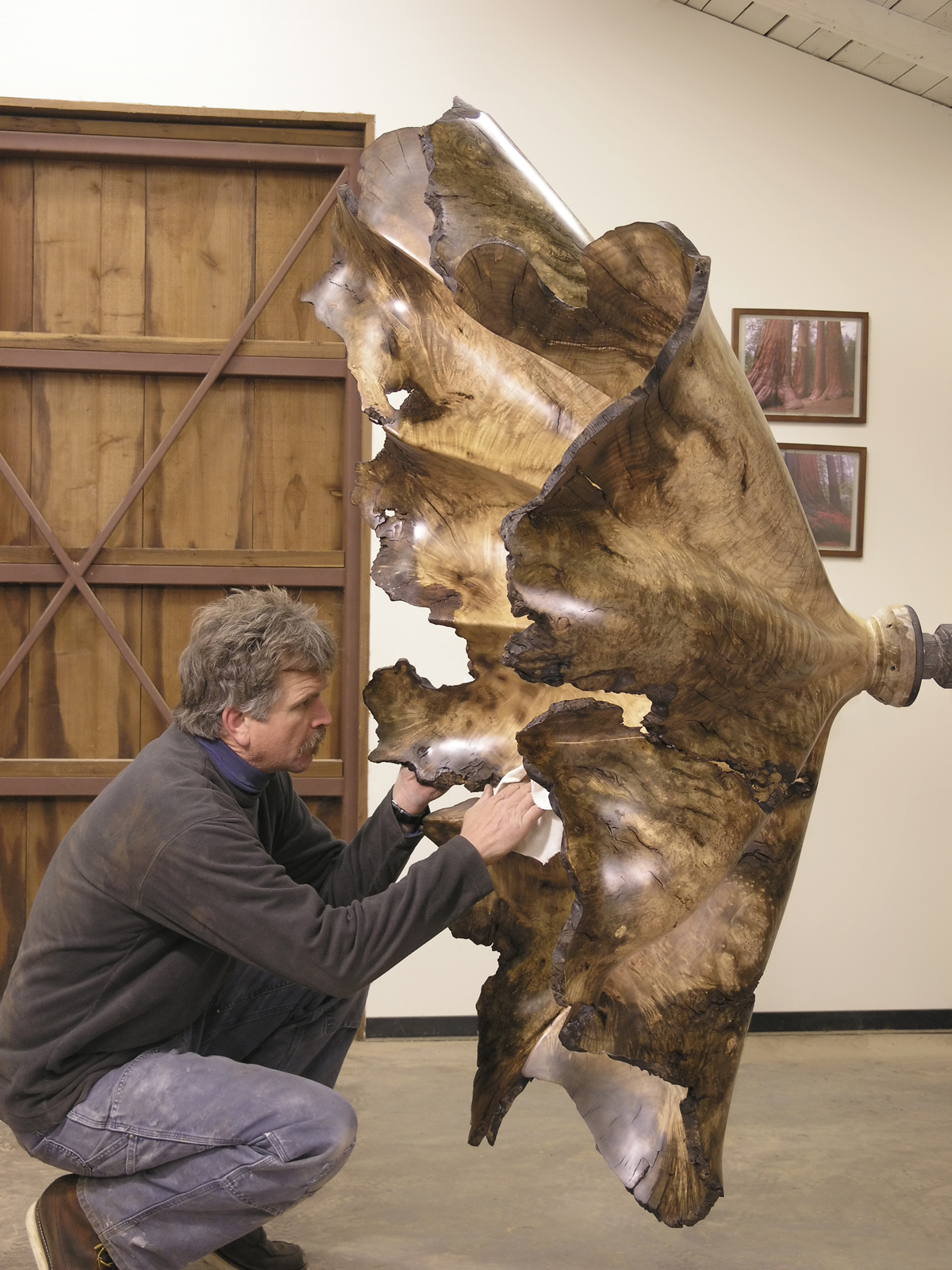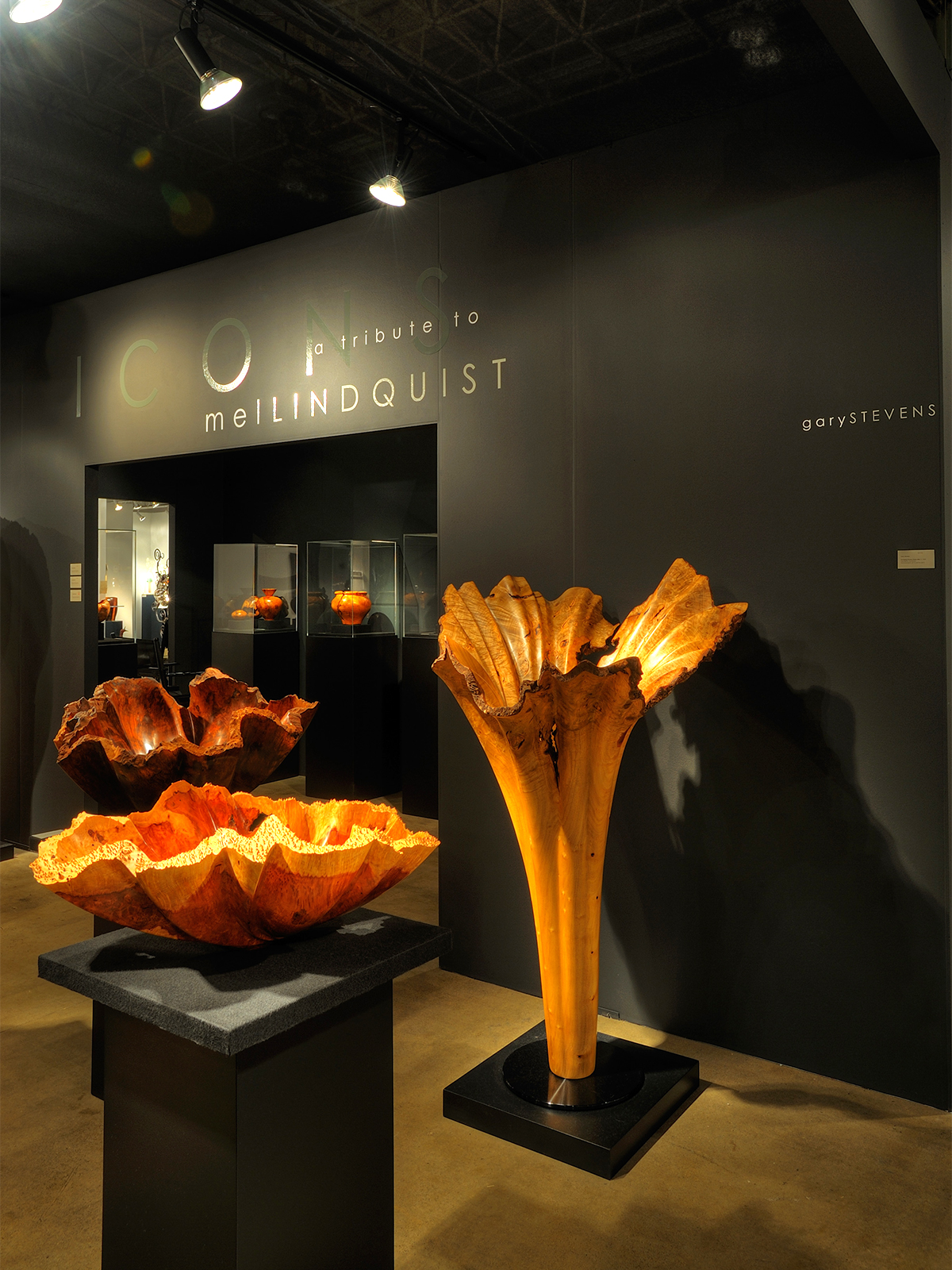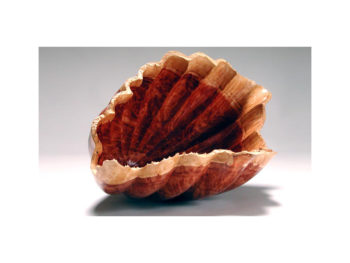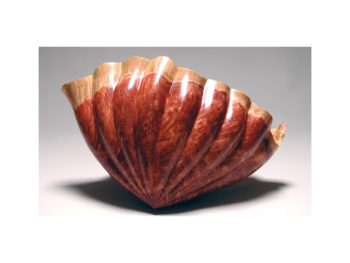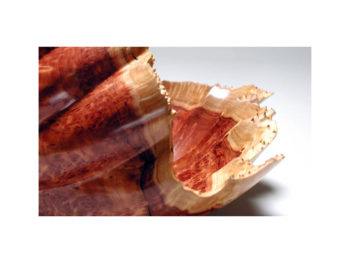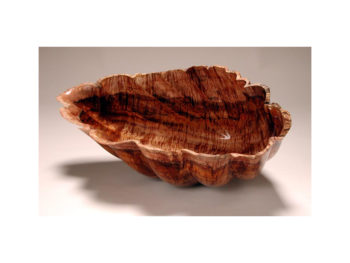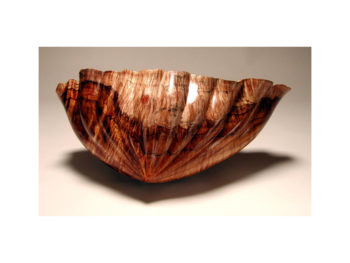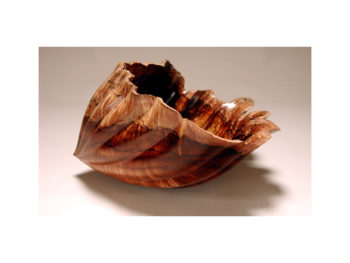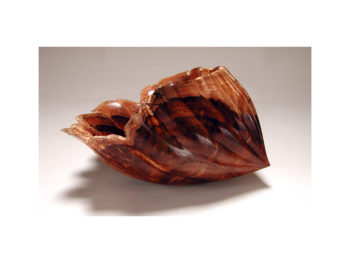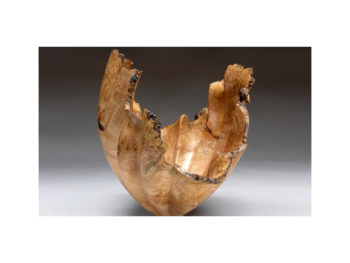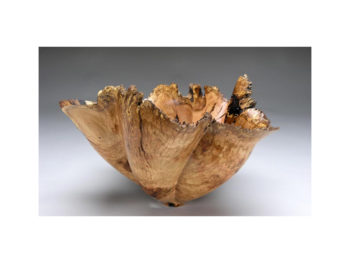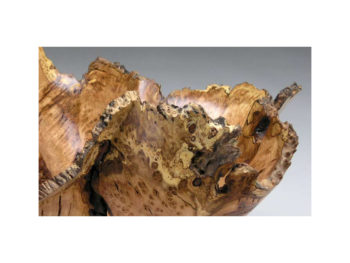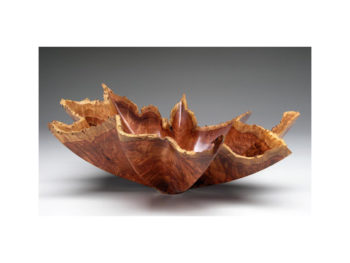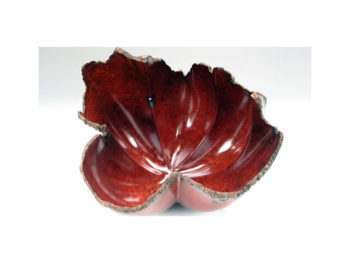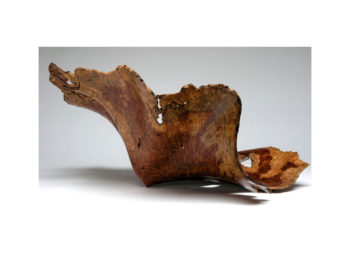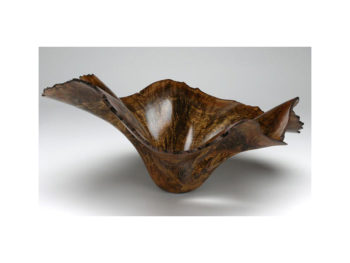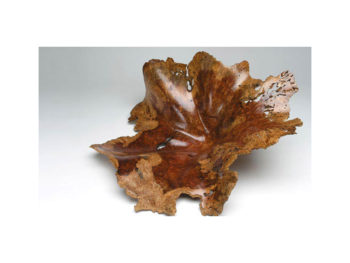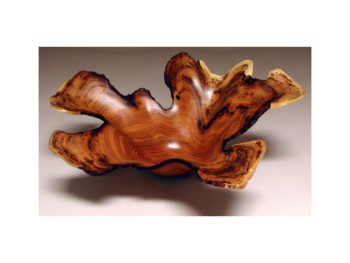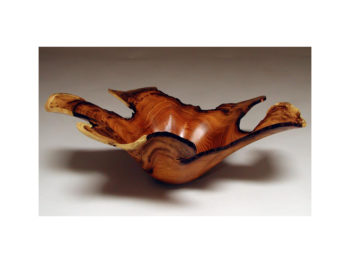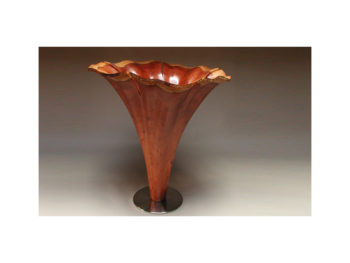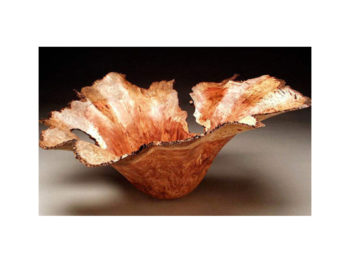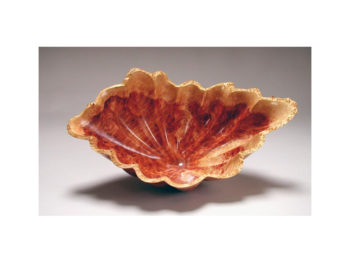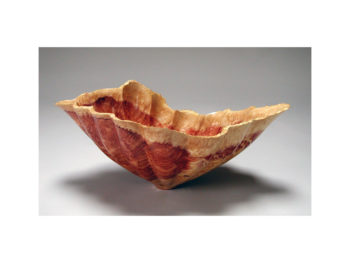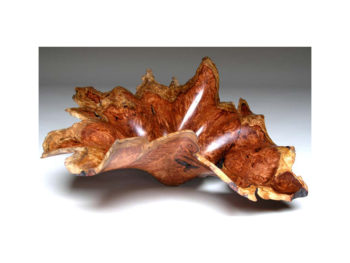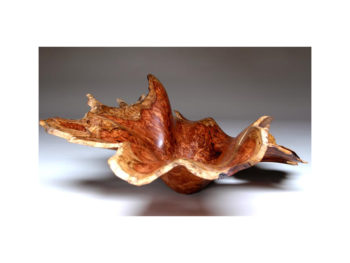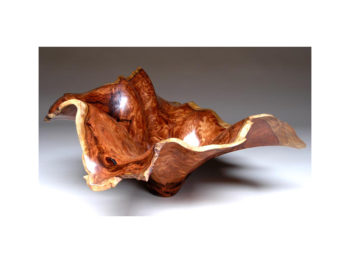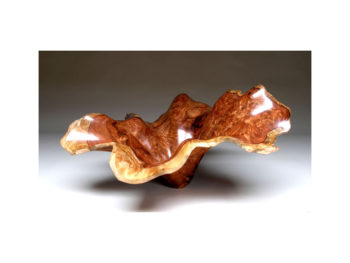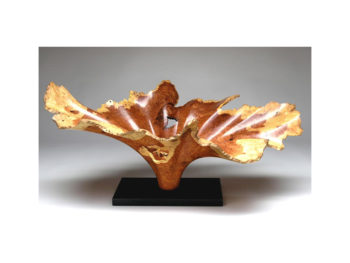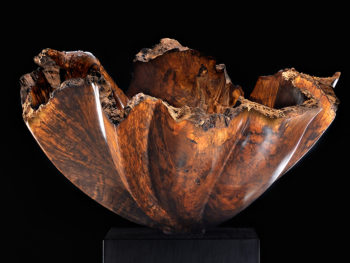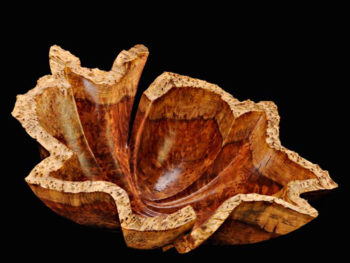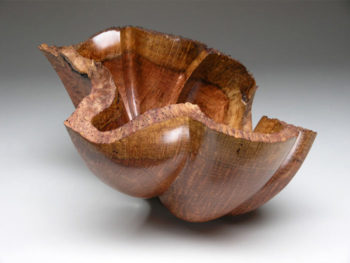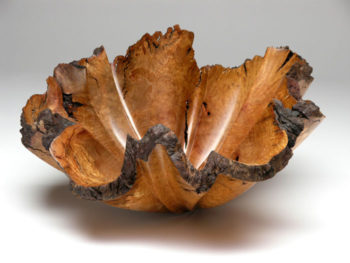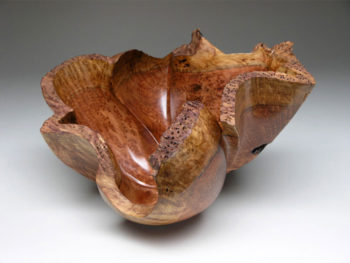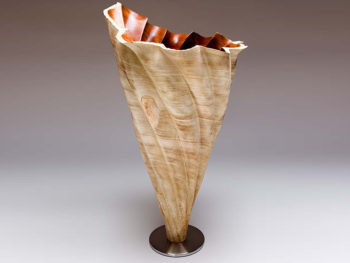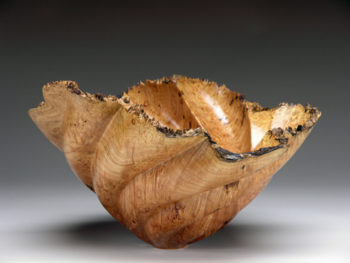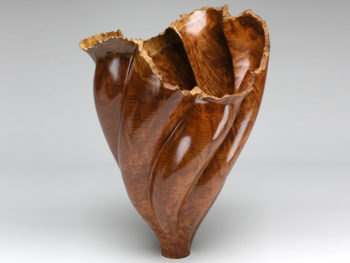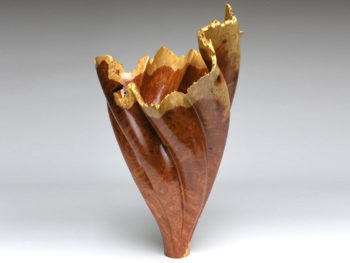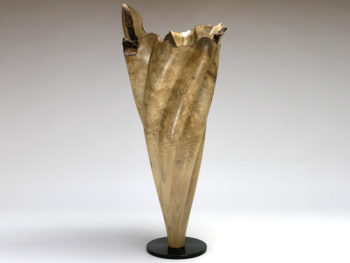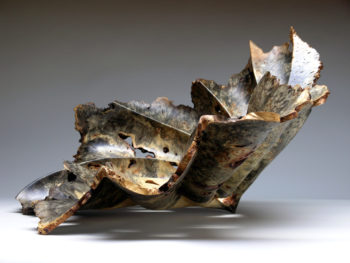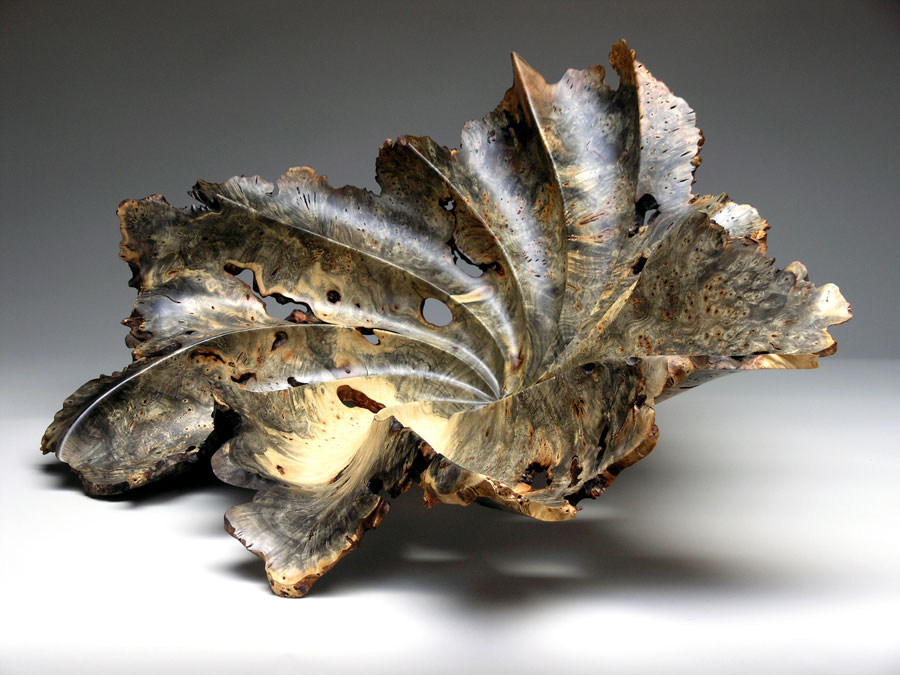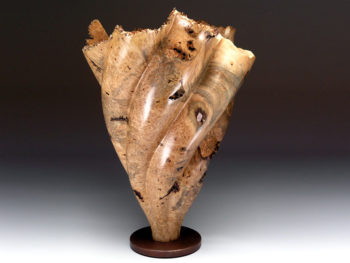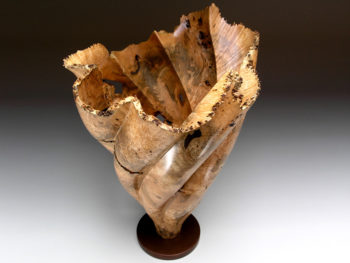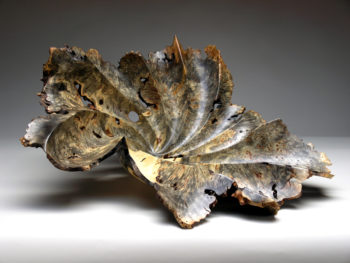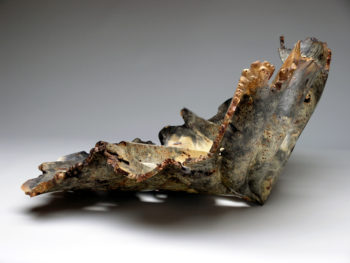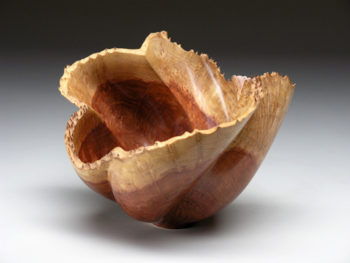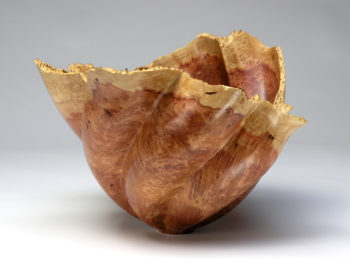Series Work
Video
Santa Cruz Wood Sculpting
A Santa Cruz wood sculptor, Gary Stevens seeks to get the form to work with what’s naturally occurring in every piece.
His passion for the wood itself comes through in his art as sculpting is an outlet for his desire to create. It is in the tranquil setting of his own redwood canyon he is inspired; and through his sculptural vessels that are variational forms of plant parts he finds a beautiful way to expose what God has created in Nature.
PBS Spark
Deep in the Santa Cruz mountains are some of California's greatest natural wonders: redwood trees, some of them thousands of years old.
These are the raw materials of Gary Stevens’ artwork, but only certain trees yield the unique growth patterns he’s searching for.
In Wine Country
One sculptor in the Santa Cruz Mountains wine country prefers a chainsaw to a chisel...
Gary’s art is sculptured vessels. He works with many types of wood, but redwood is his favorite.
ICONS
The significance of the ICONS exhibition is that it's the first time that all of this history is being pulled together in one exhibition.
These are people who are in every sense, iconic. They created the field. If you look at any contemporary wood art today, you can trace the lineage back to these people. To see it all in one place is an extraordinary thing.
Blakely Burl Tree Project
In 2009, Blakely would become known for something else: a twisted old pecan tree that went unnoticed for years...
…until the town had to cover the ditch where the tree had rooted one-hundred and fifty years before. Thus began the saga of the Blakely Burl tree and the people who would make it famous.
Artist Bio
Education:
Attended Pepperdine University in Malibu, CA
Individual studies with Mark Lindquist at Lindquist Studios
Lindquist Studios Assistant 2000
Selected Collections
Presentation to Jordan’s King Abdullah II by California Governor Arnold Schwarzenegger
Minnesota Museum of American Art, St. Paul, MN
Mint Museum of Craft and Design, Charlotte, NC
The Detroit Institute of Arts, Detroit, MI
The Contemporary Museum, Honolulu, HI
The Woodturning Center, Philadelphia, PA
Selected Books, Reviews and Articles
Vallone, Julie. South Bay Accent, “Into the Woods – Gary Stevens”
June/July 2012
Wellborn, Stan. The Crafts Report, “Strength in Numbers”. June 2012
Martin, Terry. American Woodturner, “Gary Stevens – A Road Less Traveled” April 2012. Volume 27, #2
Hooks, Jenny Murray. “C” California Lifestyle Magazine, June 2011.
Craft Arts International, #78 – Spring 2010; “Working with Ancient Woods – The Sculptures of Gary Stevens” by Kevin V. Wallace
Martin, Terry. ICONS A Tribute to Mel Lindquist,2008 rakovaBRECKERgallery.
Gurvitz, Amy. “C” California Lifestyle Magazine, August 2006.
Celebrating Nature (Catalog), Craft and Folk Art Museum. 2004
500 Wood Bowls, published by Lark Books,
a division of Sterling Publishing Co., Inc. 2004
Meilach, Dona; Wood Art Today: furniture, vessels, sculpture. 2003
Schiffer Publishing Ltd.
Nature Takes A Turn (Catalog), Co-Sponsored by The American Association of
Woodturners and the Minnesota Museum of American Art; June, 2001
Adamson, Glenn; “The Fine Art of Curating”, Turning Points,
(published by The Wood Turning Center) Winter, 2001
Liebenson, Bess; “Taking Wood to New Places”, The New York Times,
July 30, 2000
Fike, Bonita; The Fine Art of Wood, Abbeville Press Publishers, July 2000
Leier, Ray; “New Artists in Turned Wood”, Woodworker West
July/August 2000
Turner, Tran; “Wood Art Collectors’ Conference”, Craft Arts International , #45
Lacer, Alan; “Collectors of Wood Art”, American Woodturner , Winter 1998
De Coster, Andre; “International” (featured Artist), De Vlaamse Houtdraaier (The Flemish Woodturner), June 1999
Selected Exhibitions | Shows | Awards
Anne & Mark’s Art Party
Santa Clara, California
September 24 – October 1, 2016
R. Blitzer Gallery
Santa Cruz, California
May 2016
Turnfest Australia
Demonstrator and Exhibitor
Brisbane, Australia
March 19-21, 2015
Cathy Waterman Collaboration
Barneys – Beverly Hills and New York
August – October 2013
Santa Cruz Museum of Art and History
“Studio Made – Santa Cruz Woodworkers”
July 30 – November 13, 2011
Gumps “The Art of the Flower Show”
April 22 – May 16, 2010
SOFA Chicago 2008 – Navy Pier, Chicago, IL
ICONS – At Tribute to Mel Lindquist
Nov. 6-9, 2008
NBC “In Wine Country”
May 18, 2008
Gumps Mastercrafts Show
February – March, 2006
Solo Exhibition/Patina Gallery, Santa Fe, New Mexico
September 30 – October 29, 2005
Gumps Mastercrafts Show
February – March, 2005
“Celebrating Nature” – Craft Tradition/Contemporary Expressions
Craft & Folk Art Museum
August 12, 2004 – October 31, 2004
“By Hand” – KQED “Spark” television show
July 14, 2004
Gumps Mastercrafts Show
February – March, 2004
Inspired Vessel Exhibition
Los Angeles Municipal Art Gallery
December 14, 2003 – February 15, 2004
SOFA/Chicago 2003 – Navy Pier, Chicago, IL
Oct 16 – 19, 2003
Collectors of Wood Art – Santa Fe, NM
Sept. 11 – 14, 2003
“Turned Wood” – del Mano Gallery, Los Angeles, CA
June 28 – July 25, 2003
“Carol Duval Show” HGTV
Featured Artist, March 2003
Gumps Mastercrafts Show
February 25 – March 8, 2003
SOFA/Chicago 2001 – Navy Pier, Chicago, IL
Oct. 5 – 7, 2001
“California Heartland” KVIE – TV Sacramento
Featured Artist , October 2001
Pacific Craft Show – Orange County Museum of Art, Newport Beach, CA
Sept. 13 – 16, 2001
“Spirit of Wood” – California State Fair – Sacramento, CA
Aug. 17 – Sept. 3, 2001
“Turned Wood” – del Mano Gallery, Los Angeles, CA
June 16 – July 14, 2001
SOFA – New York City, NY
May 30 – June 4, 2001
“Nature Takes a Turn”
Exhibition Schedule:
Minnesota Museum of American Art; St Paul, Minnesota
June 22 – August 12, 2001
University of California at Davis; Memorial Union Art Gallery
September 24 – November 2, 2001
Arrowmont School for the Crafts – Sandra Blain Gallery; Gatlinburg, Tennessee
January 5 – May 5, 2002
University of New York at Purchase – Neuberger Museum of Art
June 16 – September 8, 2002
“Turned Wood – Small Treasures” – del Mano Gallery, Los Angeles, CA
Mar. 3 – Mar. 31, 2001
“Mastercrafts Show 2001” – Gumps, San Francisco, CA
Feb. 1 – April 1, 2001
“Selected Wood” – del Mano Gallery, Los Angeles, CA
Jan. 27 – Feb. 24, 2001
SOFA/Chicago – Navy Pier, Chicago, IL
Nov. 2-5, 2000
“Pacific Craft Show” – Orange County Museum of Art, Newport Beach, CA
Sept. 15 – 17, 2000
“The Fine Art of Wood at the Millennium” – The Detroit Institute of Arts
June 2000 – January 2001
Invited Artist – “Horizons 2000”, curated by David Ellsworth
The Lynn Tendler Bignell Gallery at the Brookfield Craft Center
June 18 – Aug. 13, 2000
“Turned Wood 2000” – del Mano Gallery, Los Angeles, CA
June 16 – July 14, 2001
SOFA – New York City, NY
June 1-4, 2000
“Master Woodturners” – Hodges Taylor Gallery, Charlotte, NC
May 5 – July 1, 2000
“Turned Wood – Small Treasures” – del Mano Gallery, Los Angeles, CA
Mar. 18 – April 15, 2000
“Mastercrafts Show 2000” – Gumps, San Francisco, CA
Jan. 18 – March 18, 2000
SOFA/Chicago – Navy Pier, Chicago, IL
Oct. 4-7, 1999
“American Woodturners Profile” – R. Duane Reed Gallery, Chicago, IL
July 16 – August 28, 1999
Mark Lindquist/Gary Stevens Collaborative Work SOFA – New York, 1999
“Arrowmont National 1999 Juried Exhibition” –
Arrowmont’s Sandra J. Blain Gallery
Feb.26 – May 15, 1999.
“Spectrum ‘98 “ – Hunter Museum of American Art, Chattanooga, TN December, 1998
“Wood Art Collector’s Conference” – San Francisco, CA Sept. 11-13 1998
Second Place/Sculpture Division
“The American Experience” 1997 – Perry House Galleries, Alexandria, VA
January – May 1997
Shows and Events
Beginning June 28, 2009
The Blakely Burl Tree Project began as an investigation into a rare Pecan
(Carya illinoinensis) burl tree located in Blakely, Georgia.
SPARK: By Hand
KQED Spark looks at extraordinary craftspeople at work
KQED-TV Channel 9
Wednesday, June 23 at 7:30pm
Friday, June 25 at 10:30pm
see KQED Listings »
American Style Magazine
San Francisco Art Tour
September 30-October 5th, 2009
Exploring Contemporary Arts in the City by the Bay
Icons—A Tribute to Mel Lindquist
November 6-9, 2008
Festival Hall, Navy Pier
Selected Museums and Collections
Mint Museum of Craft and Design, Charlotte, NC
The Detroit Institute of The Arts, Detroit, MI
The Contemporary Museum, Honolulu, HI
Wood Turning Center, Philadelphia, PA
Arrowmont’s Sara J. Blain Gallery, Gatlinburg, TN
Contact
Contact Us
For more information on where to view and purchase work, contact Gary.
